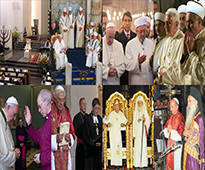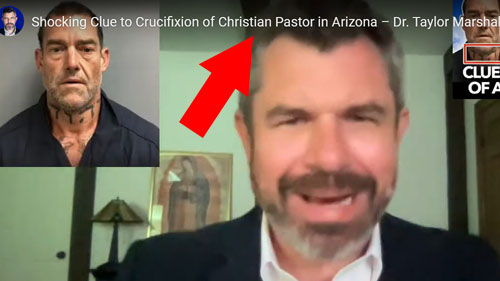| Recent Featured Videos and Articles | Eastern “Orthodoxy” Refuted | How To Avoid Sin | The Antichrist Identified! | What Fake Christians Get Wrong About Ephesians | Why So Many Can't Believe | “Magicians” Prove A Spiritual World Exists | Amazing Evidence For God | News Links |
| Vatican II “Catholic” Church Exposed | Steps To Convert | Outside The Church There Is No Salvation | E-Exchanges | The Holy Rosary | Padre Pio | Traditional Catholic Issues And Groups | Help Save Souls: Donate |  |









 " />
" /> " />
" /> " />
" /> " />
" /> " />
" />




The Forty Martyrs Of Sebaste & Saint Emerentiana
An example of how the baptism of blood advocates err in this matter is their assertion that the fortieth martyr of Sebaste was unbaptized. They say that he was unbaptized, but that he joined himself with the other thirty-nine martyrs and froze to death for Christ on the lake. The fact is that there is no proof that the fortieth martyr of Sebaste was unbaptized, whose identity is unknown. The accounts of the story reveal that he “cried out with a loud voice that he was a Christian,” probably because he was already a baptized Catholic who was spurred on to martyrdom by the example of the other thirty-nine. Further, in the Roman Martyrology under the date of September 9, we read:
It is certain that Severian was not the fortieth martyr (from the date and circumstances of his death), but we see from this account that other people and soldiers were able to visit the forty in prison. Thus, the forty martyrs easily could have baptized any soldiers who showed interest and sympathy with their cause, including the one who joined himself to them eventually (if he wasn’t already baptized). Thus, there is nothing that proves that the fortieth martyr was unbaptized, and we know that he was from the truth of our Faith. The same can be said about all of the approximately 20 cases which are brought forward by the baptism of blood advocates.
I will quote verbatim from Brother Robert Mary, in Father Feeney and The Truth About Salvation (pp. 173-175), who clears up some of the confusion which swirls around this topic:
In Tradition, the Church did not reveal certain things except to the initiated (the baptized). So, after a person was baptized he or she frequently continued catechetical instruction, and was therefore sometimes referred to as a “catechumen.” The fact that there is a distinction between unbaptized catechumens and baptized catechumens is implicit in the following quotation from the Council of Braga in 572.
If those described as “catechumens” were always unbaptized, then there would be no need for the council to say that no chanting or sacrifice is to be employed for catechumens “who have died without baptism.” Therefore, the fact that the Roman Martyrology describes a few saints as “catechumens,” such as St. Emerentiana, does not prove that they were unbaptized, even though the term “catechumen” usually means unbaptized. Besides, the Roman Martyrology is not infallible and contains historical errors.
Concerning the Roman Breviary, Dom Prosper Guéranger, one of the most celebrated liturgists in Church history, seems to correct certain errors in the Roman Breviary:
Further, we will see in the section on St. Gregory Nazianz (pp. 76-77) that if one applies the teaching of the Breviary on theological matters as infallible, then he must reject baptism of desire. I continue with the quotation from Bro. Robert Mary:
There is no need to examine in detail all of the fewer than 20 individual cases of saints’ martyrdoms (out of thousands) which some have said occurred without baptism. For instance, in the case of St. Emerentiana – who was martyred while praying publicly at the tomb of St. Agnes during the persecution of Diocletian – one could point out that the account of her martyrdom provides a situation that, in itself, suggests she was already baptized; for she wouldn’t have endangered herself in that fashion during the persecution had she not been baptized. Or even if she wasn’t baptized before she was attacked (which is highly unlikely), she certainly could have been baptized after the attack by her mother who accompanied her (according to accounts) to the tomb to pray.
There are so many stories which give a drastically different impression and hold a different meaning if just one small detail is omitted. Take, for instance, the case of St. Venantius. At 15 years of age, St. Venantius was taken before the governor during the persecution of the Emperor Decius:
This interesting story shows us, once again, how God gets baptism to all His elect, but notice how easily it could have been misunderstood if one simple detail had been omitted. If the single point about how Anastasius and his family were baptized by Porphyrius had been omitted, the reader would almost certainly get the impression that Anastasius was a martyr for Christ who never received baptism – receiving instead “baptism of blood.”
The fact is that there is no need to go through all of these few cases and show that: 1) there is no proof that the saint (whom they claim was unbaptized) wasn’t baptized; and 2) there are many explanations for how the saint could have been and was baptized. All that is necessary to disprove the claim that there are unbaptized saints is to show that the Church has infallibly taught that no one can get to heaven without being born again of water and the Holy Ghost in the Sacrament of Baptism.
However, one alleged case of “baptism of blood” is particularly interesting.
[1] The Roman Martyrology, Fitzwilliam, NH: Loreto Publications, p. 203 (Sept. 9).
[2] Denzinger 696; Decrees of the Ecumenical Councils, Vol. 1, p. 542.
[3] Decrees of the Ecumenical Councils, Vol. 1, p. 6.
[4] The Catholic Encyclopedia, “Baptism,” Volume 2, 1907, p. 265.
[5] Donald Attwater, A Catholic Dictionary, Tan Books, 1997, p. 310.
[6] Dom Prosper Guéranger, The Liturgical Year, Loreto Publications, 2000, Vol. 8, p. 315.
[7] Dom Prosper Guéranger, The Liturgical Year, Vol. 8, p. 521.
[8] Denzinger 861; Decrees of the Ecumenical Councils, Vol. 2, p. 685.
Sign up for our free e-mail list to see future vaticancatholic.com videos and articles.
Recent Content
^